Understanding SPF: Decoding Sunscreen Protection Levels
With summer in full swing, it's essential to prioritize skin protection, especially when spending time outdoors. A sunscreen is vital in guarding our skin against the harmful effects of the sun's ultraviolet (UV) rays. However, navigating the world of sunscreens can be confusing, particularly when deciphering the different sunscreen spf levels. In this blog, we will decode sunscreen protection levels and help you choose the right sunscreen spray for your needs.
What is SPF? SPF stands for Sun Protection Factor, which is a measure of how well a sunscreen will protect your skin from UVB rays. UVB rays are the type of rays that cause sunburn and can contribute to skin cancer. SPF level does not measure protection from UVA rays, which can also cause skin damage.
SPF Sunscreen Levels Sunscreen protection is measured in SPF levels. The SPF number on a sunscreen indicates the level of protection it offers. For example, SPF 15 filters out approximately 93% of UVB rays, while SPF 30 filters out around 97%. The higher the SPF number, the greater the level of protection. However, it's important to note that SPF only pertains to UVB protection and not UVA rays.

Sunscreen SPF Levels When choosing a sunscreen, it's important to consider your skin type, the activities you will be doing, and the amount of sun exposure you will have. Here are some general guidelines for choosing the right SPF level:
- SPF 15: This is the minimum level of protection. It filters out approximately 93% of UVB rays, allowing only 1/15th of the rays to reach the skin.
- SPF 30: This level of protection filters out around 97% of UVB rays, permitting only 1/30th of the rays to reach the skin. SPF 30 provides significantly better protection than SPF 15.
- SPF 50: Offering a higher level of protection, SPF 50 filters out approximately 98% of UVB rays, allowing only 1/50th of the rays to reach the skin.
- SPF 60 and Beyond: The highest spf sunscreens are labeled as SPF 60 or even higher. They provide the highest level of UVA & UVB protection in comparison to SPF 30 & SPF 50 and is best for those who spend extended periods of time in the sun.
Remember, along with the sunscreen SPF level, diligent application and reapplication are crucial for effective sun protection.

Factors to Consider :
While SPF level is an essential factor to consider when choosing a sunscreen, it's important to keep in mind that sunscreen protection should not be the sole defense against UV radiation. Here are a few additional factors to consider for comprehensive sun protection:
- Broad-Spectrum Protection: Look for sunscreens labeled as "broad-spectrum," as they provide protection against both UVA and UVB rays. Although SPF level only measures UVB protection, UVA rays can also cause skin damage and contribute to premature aging.
- Water Resistance: If you plan to swim, sweat, or engage in water activities, opt for a water-resistant sunscreen with spf highest level. Keep in mind that even water-resistant sunscreens require reapplication, especially after toweling off.
- Application and Reapplication: Regardless of the SPF level, proper and regular application is essential. Apply sunscreen generously to all exposed areas of the skin, at least 15 minutes before sun exposure. Reapply every two hours, or more frequently if swimming or perspiring heavily.
Sunscreen protection is essential for maintaining healthy skin and reducing the risk of skin cancer. Understanding SPF sunscreen levels can help you choose the right sunscreen for your needs. Remember to apply sunscreen at least 15 minutes before sun exposure and reapply every two hours or after swimming or sweating. Stay safe in the sun and protect your skin!
FAQs
The 5 steps to sun safety are:
1. Apply sunscreen.
2. Wear protective clothing.
3. Stay under shade during peak hours (10:00a.m. to 04:00p.m.)
4. Stay hydrated.
5. Don't forget to reapply the sunscreen.
Follow these tips for being in the sun:
1. Apply broad-spectrum sunscreen with SPF 30 or higher.
2. Choose long sleeves, hats, and UV-blocking sunglasses.
3. Drink plenty of water to prevent dehydration.
4. Reapply every two hours or after swimming or sweating.
5. Limit sun exposure between 10 a.m. and 4 p.m.
To apply sunscreen correctly, use a generous amount and cover all exposed skin, including often-missed areas like the ears, back of the neck, and tops of the feet. Apply it at least 15 minutes before sun exposure, and reapply every two hours or immediately after swimming or sweating.
The 5 W's of sunscreen are:
1. Who: Everyone, regardless of age or skin type, should use sunscreen.
2. What: Use a broad-spectrum sunscreen with at least SPF 30.
3. When: Apply sunscreen 15 minutes before sun exposure and reapply every two hours or after swimming or sweating.
4. Where: Apply to all exposed skin, including face, neck, ears, and the tops of feet.
5. Why: To protect against harmful UV rays, prevent sunburn, reduce the risk of skin cancer, and prevent premature aging.
The 3 finger rule in sunscreen means you need to squeeze sunscreen on your three fingers and then apply it thoroughly on your face. This ensure that you are applying the right quantity.
Look for these criterias while choosing the perfect sunscreen:
1: SPF Level: Select SPF 30 or higher for adequate protection.
2. Broad Spectrum: Ensure it protects against both UVA and UVB rays.
3. Skin Type: Choose a formulation suited to your skin type (e.g., sensitive, oily).
4. Water Resistance: Opt for water-resistant sunscreen if swimming or sweating.
5. Non-Comedogenic: Especially for acne-prone skin to avoid clogging pores.
Yes, it is an excellent choice to wear sunscreen on face everyday to protect your skin from harmful UV rays and other signs of ageing.
Yes, sunscreen helps protect your face from harmful UV rays, preventing sunburn, premature ageing, and reducing the risk of skin cancer.
Here are the benefits of sunscreen:
1. Protection from UV rays.
2. Prevents sunburn.
3. Anti-ageing.
4. Skin cancer prevention.
5. Maintains skin tone.
Yes, babies need sunscreen, but it's important to use specially formulated sunscreen designed for infants over 6 months old. Always consult with a pediatrician before applying sunscreen to babies, and keep them protected with hats, clothing, and shade whenever possible.
Here are the best sunscreen ingredients to look for:
1. Mineral Sunscreens: Zinc oxide and titanium dioxide provide broad-spectrum protection and are gentle on sensitive skin.
2. Chemical Filters: Avobenzone, octinoxate, octisalate, and octocrylene offer effective UV protection in chemical sunscreen formulations.
3. Broad-Spectrum Coverage: Ensure the sunscreen protects against both UVA and UVB rays for comprehensive sun protection.
More Related Terms
Sun Care Tips | Sunscreen Secrets | Spf60 sunscreen | Body Suncare | Sunscreen Spray









